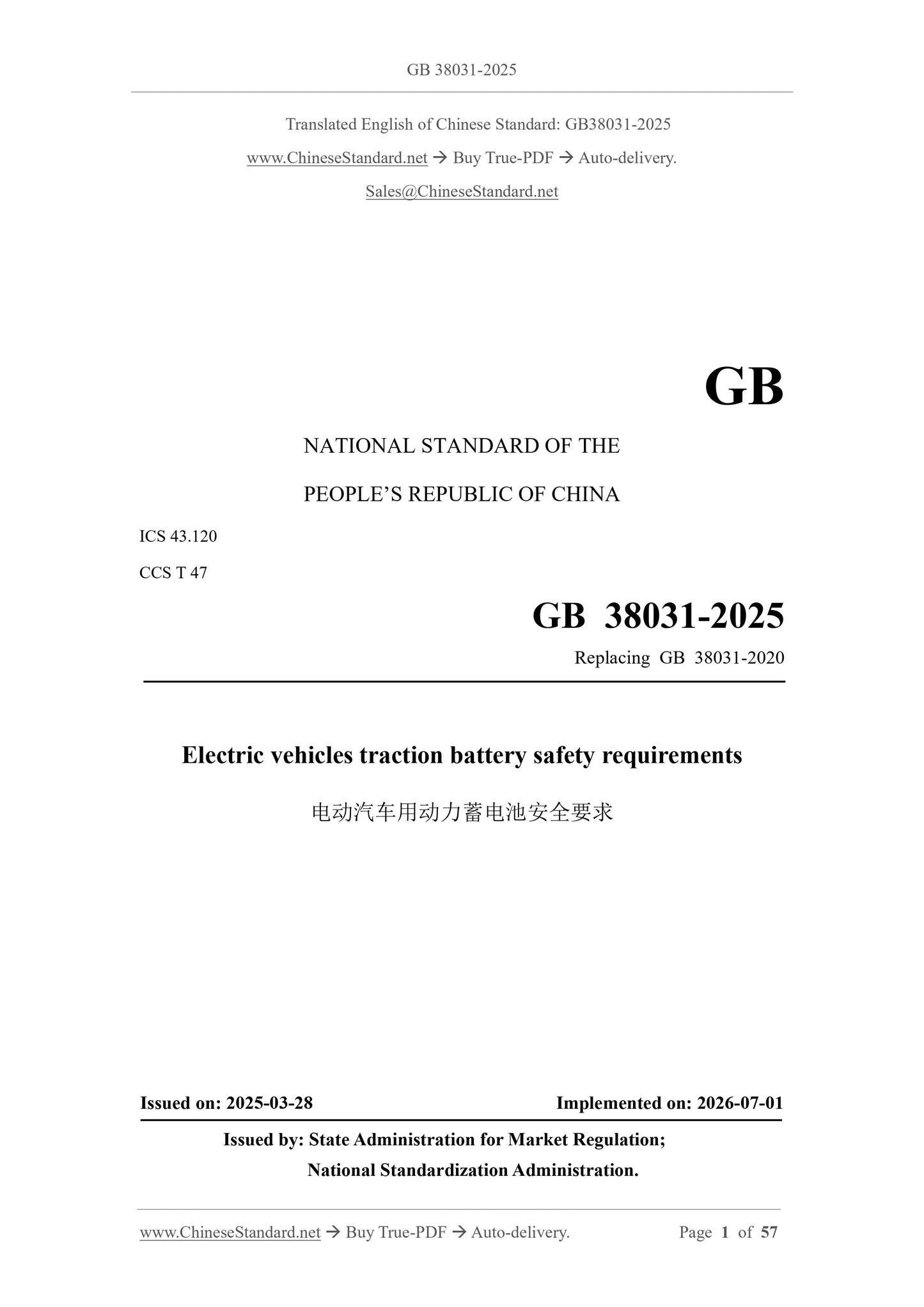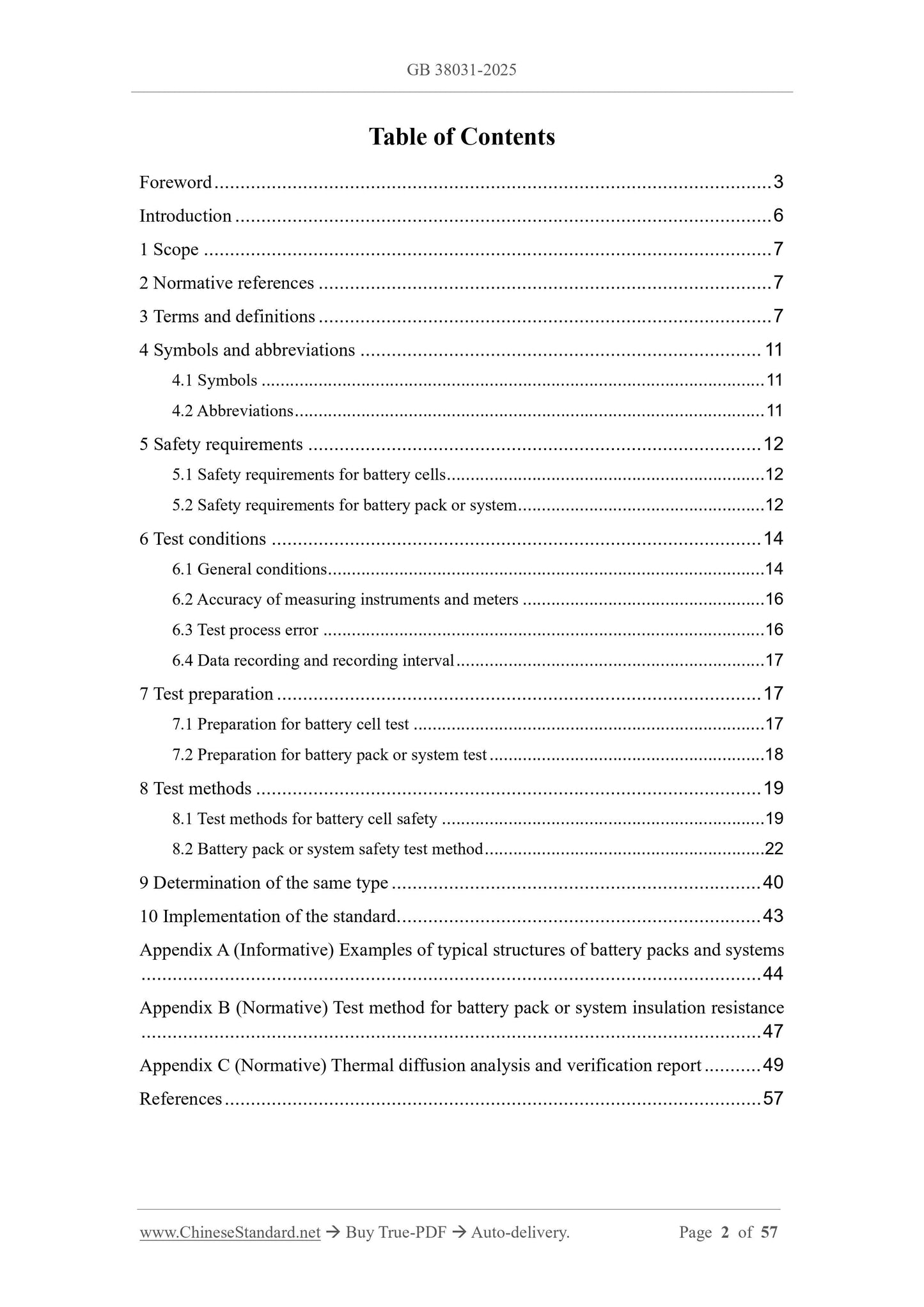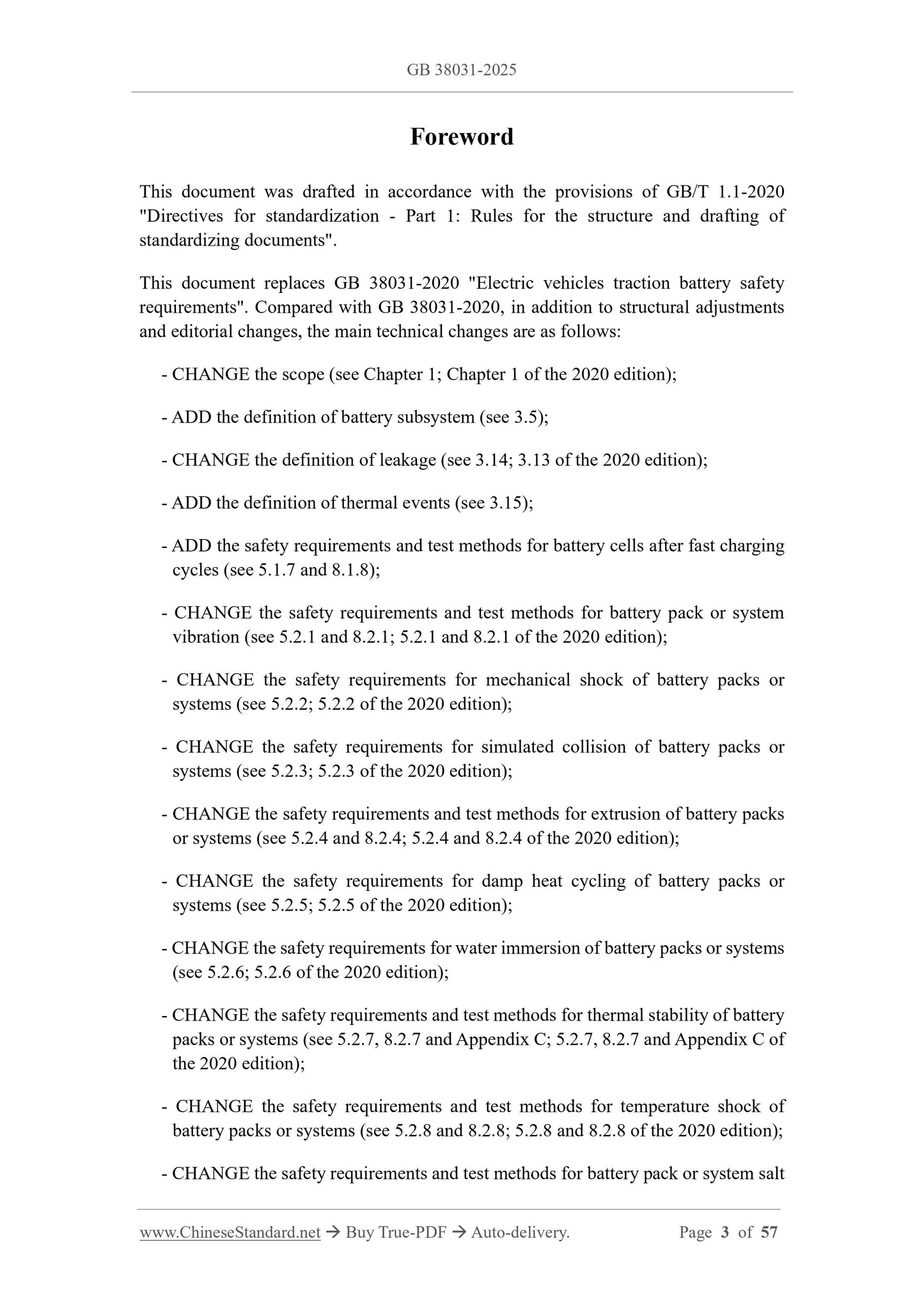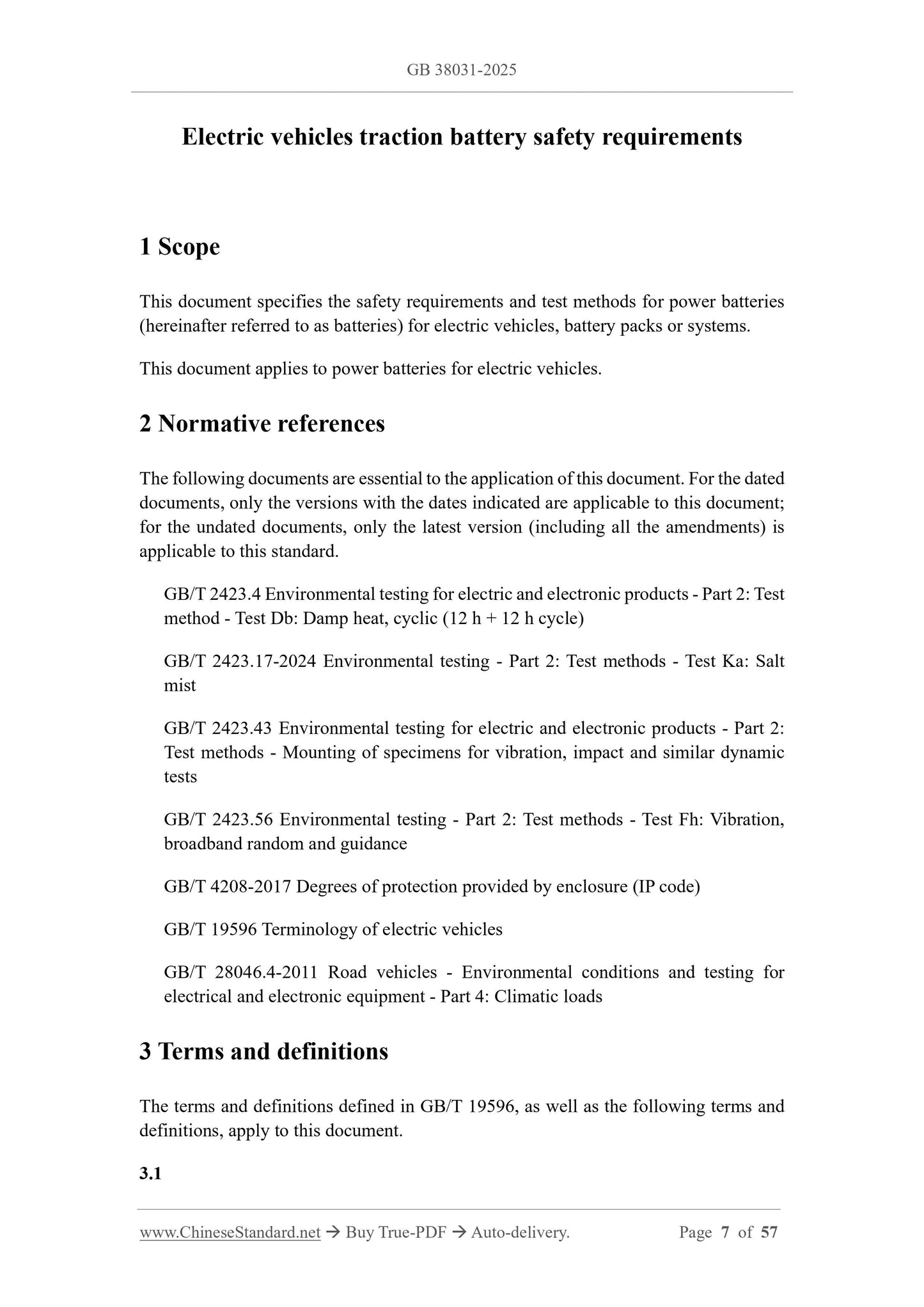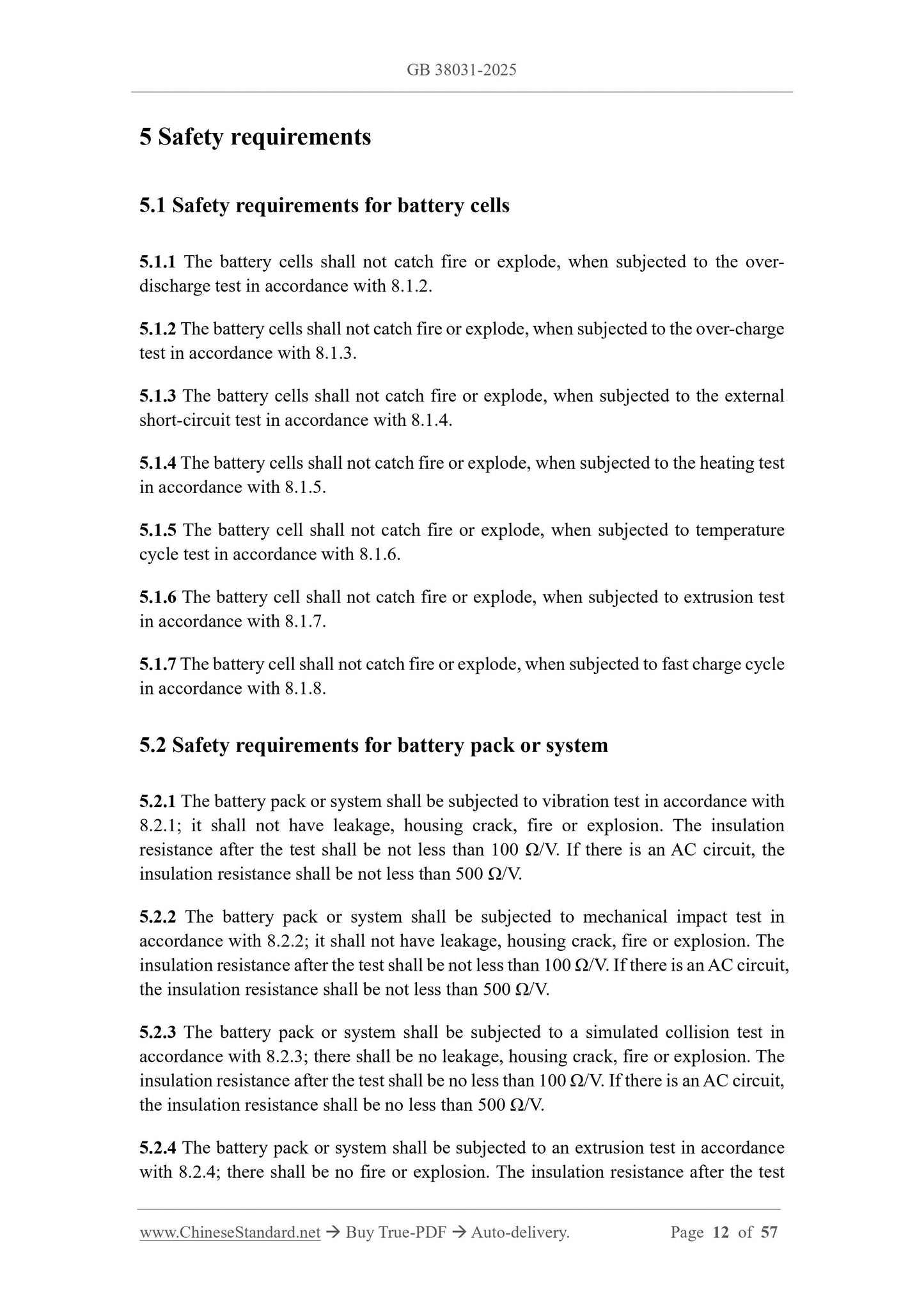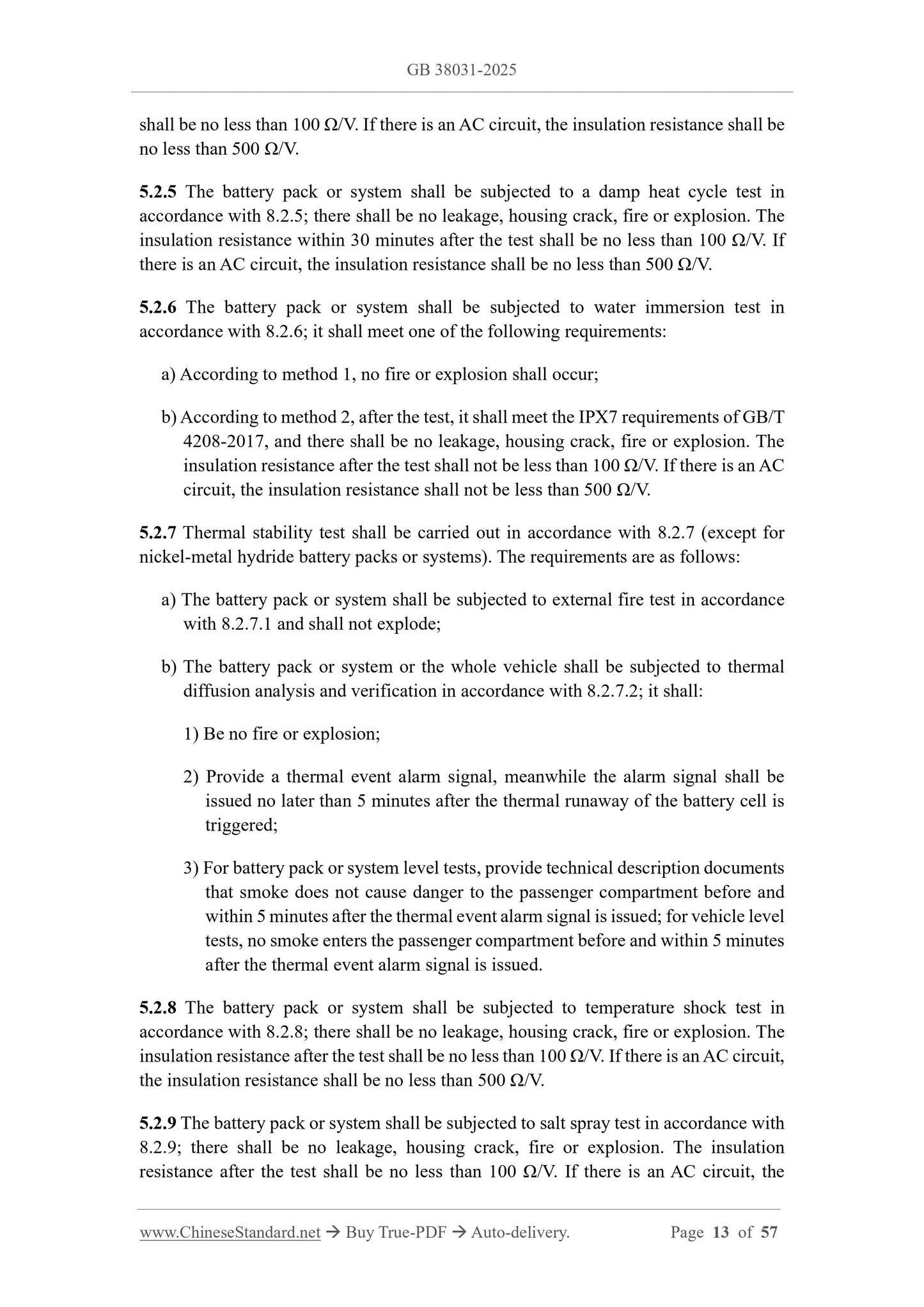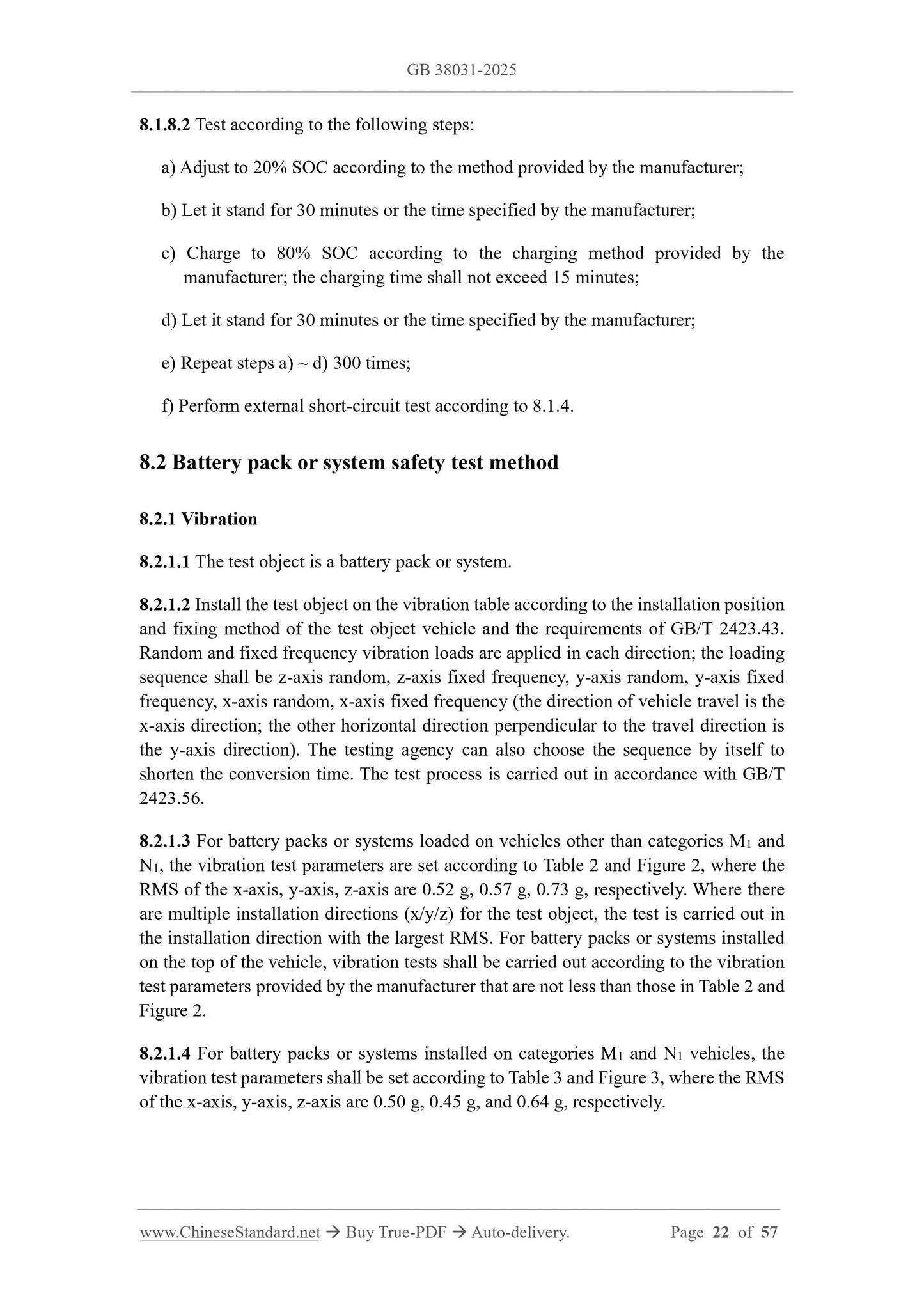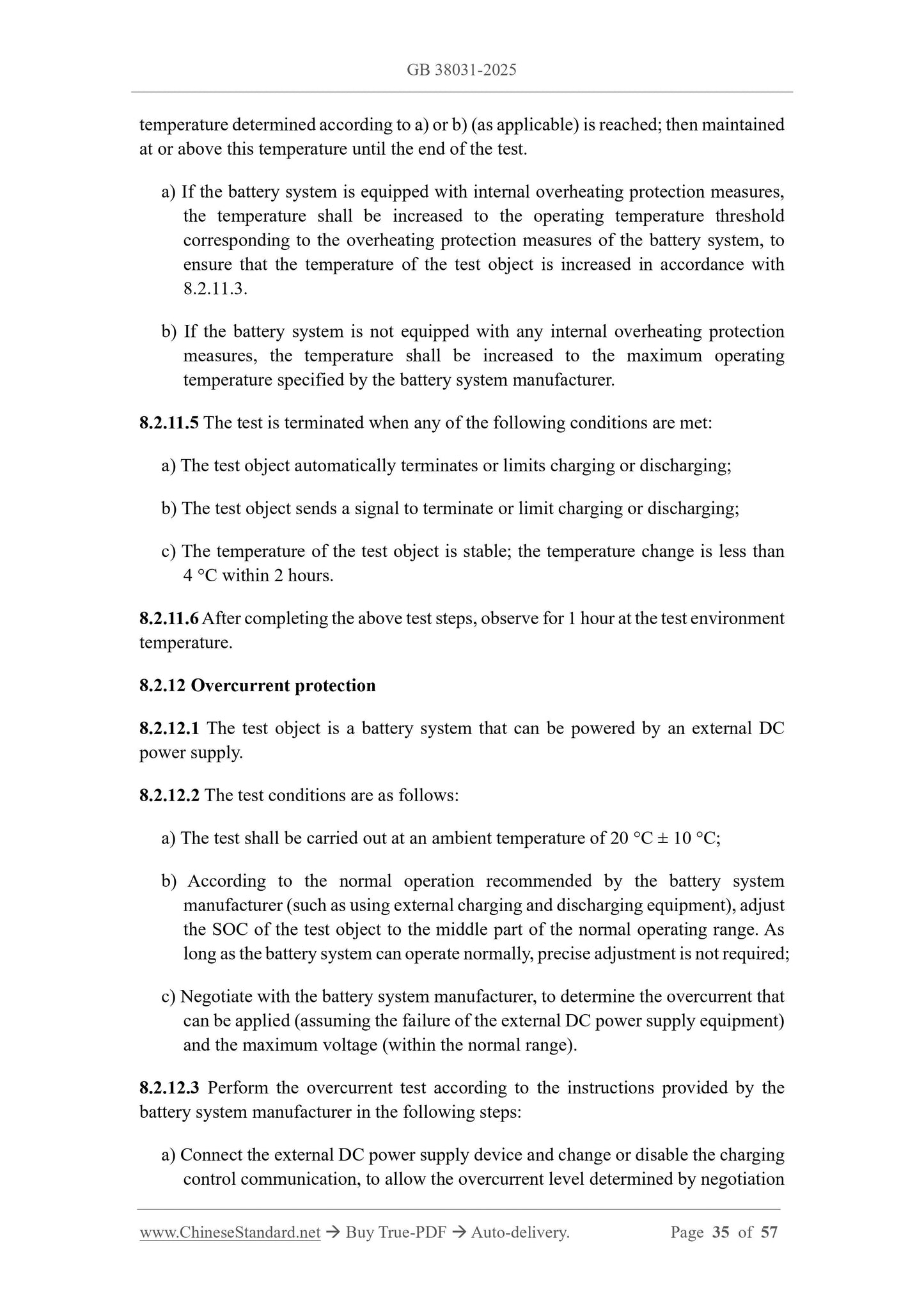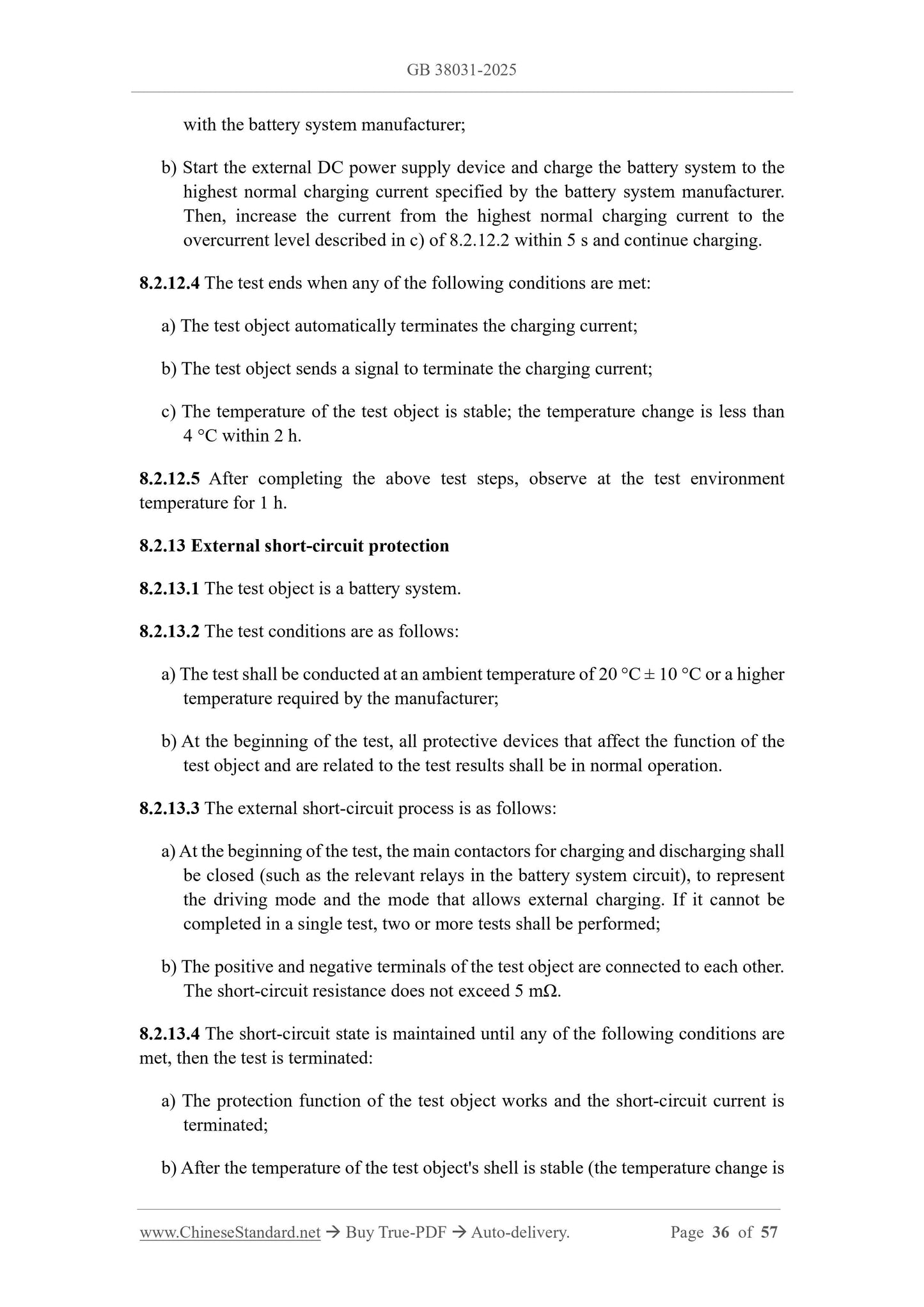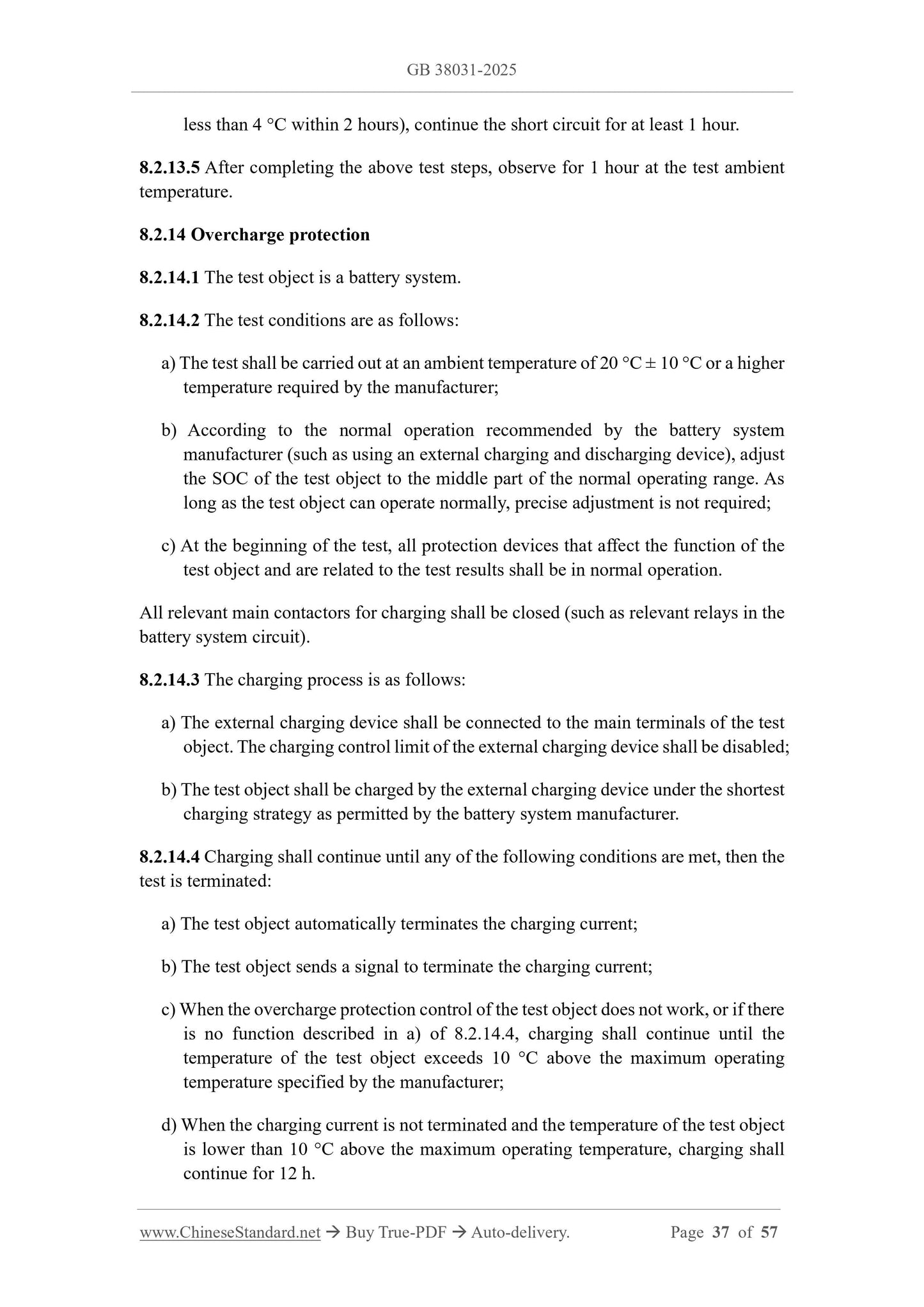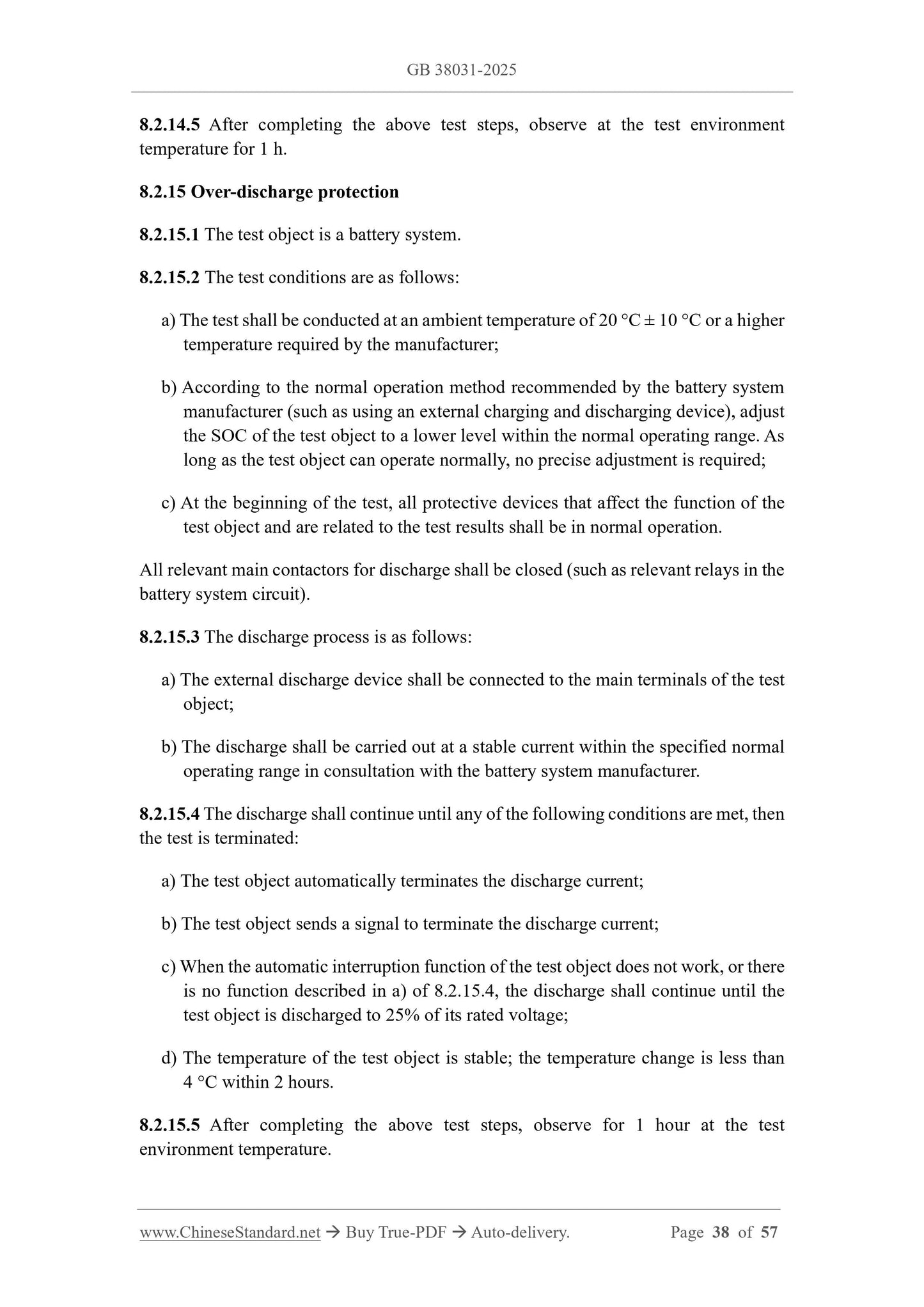1
/
of
12
www.ChineseStandard.us -- Field Test Asia Pte. Ltd.
GB 38031-2025 English PDF
GB 38031-2025 English PDF
Regular price
$590.00
Regular price
Sale price
$590.00
Unit price
/
per
Shipping calculated at checkout.
Couldn't load pickup availability
GB 38031-2025: Electric vehicles traction battery safety requirements
Delivery: 9 seconds. Download (and Email) true-PDF + Invoice.Get Quotation: Click GB 38031-2025 (Self-service in 1-minute)
Newer / historical versions: GB 38031-2025
Preview True-PDF
Scope
This document specifies the safety requirements and test methods for power batteries(hereinafter referred to as batteries) for electric vehicles, battery packs or systems.
This document applies to power batteries for electric vehicles.
Basic Data
| Standard ID | GB 38031-2025 (GB38031-2025) |
| Description (Translated English) | Electric vehicles traction battery safety requirements |
| Sector / Industry | National Standard |
| Classification of Chinese Standard | T47 |
| Classification of International Standard | 43.120 |
| Word Count Estimation | 40,441 |
| Date of Issue | 2025-03-28 |
| Date of Implementation | 7/1/2026 |
| Older Standard (superseded by this standard) | GB 38031-2020 |
| Issuing agency(ies) | State Administration for Market Regulation, China National Standardization Administration |
Share
